Farm to You
CNEP Farm to You
RequirementsThere is no cost for Farm to You to attend your school virtually or in-person, but there are a few requirements:
Virtual Farm to You
- A way to project a Zoom feed in each participating classroom (i.e. projector on a whiteboard)
- Internet connection to support Zoom meetings
- A teacher in each classroom to help us communicate with students
- Virtual Farm to You includes interactive questions and activities at each station to keep the students engaged. Teachers will be asked to type their class’s answers in the chat box as a form of communication between script presenters and the students.
- A quick technology test prior to the school’s virtual exhibit
- Coordination with a County Extension Educator who will serve as a point of contact throughout the process and travel to the exhibit location to present the station scripts on the day of the virtual exhibit.
There is currently no minimum or maximum number of participants for Virtual Farm to You.
Traditional Farm to You
- A clean, indoor space of 40 by 40 foot with an 11 foot ceiling height
- A minimum of 250 students to participate on exhibit day
- While Farm to You is generally set up at one school, the exhibit can be set up in a convenient location where several schools can participate.
- Volunteers to be recruited by school
- Minimum of 8 volunteers for set up day
- Minimum of 12 volunteers for exhibit day and tear down
- Past volunteers include parents, grandparents, high school students, 4-H Jr. Leaders, 4-H volunteers, FFA members, community members, college students, nursing students, PTA volunteers and Oklahoma Home and Community Education volunteers.
Educational BenefitsBoth our traditional and virtual Farm to You are an interactive, walk-through adventure that meets numerous educational requirements.
Farm to You Learning Objectives:
- Children will be able to identify common foods produced in Oklahoma.
- Children will learn about the five MyPlate food groups and how to build a healthy plate.
- Children will be able to identify foods they should eat regularly to promote good
health and foods they should only eat sometimes or once in a while.
- Children will be able to identify foods they should eat to promote a healthy mouth.
- Children will be able to identify high fiber foods.
- Children will be able to identify foods for strong muscles and bones.
- Children will be able to identify foods that aid in brain function.
- Children will learn about proper dental hygiene practices.
- Children will learn about the benefits of physical activity.
Evaluation
As a part of their exhibit experience, third and fourth grade students will complete a passport of questions related to each station. The role of the passport is to determine the effectiveness of the exhibit on meeting the learning objectives.
In addition to Farm to You being well received by schools and programs statewide, it has been recognized nationally, endorsing OSU Extension as a premier agency for providing agricultural and nutritional programming. More importantly, as part of a comprehensive nutrition/health intervention, it was found to enhance behavior change among fourth and fifth grade students beyond that achieved in a control group, thus increasing program effectiveness.
Farm to You has been named the 2010 Children's Health Champion and recipient of the Dr. Rodney Huey Memorial Champion of Oklahoma Health award, the highest honor of the Champions of Health awards. The project also received national attention by being featured in Weighing the Options: How Can We Encourage Healthy Weights among America’s Youth?, a publication of the National Issues Forum Network, West Virginia Center for Civic Life.
Stations
For more information, contact your local county office or email us at farmtoyou@okstate.edu
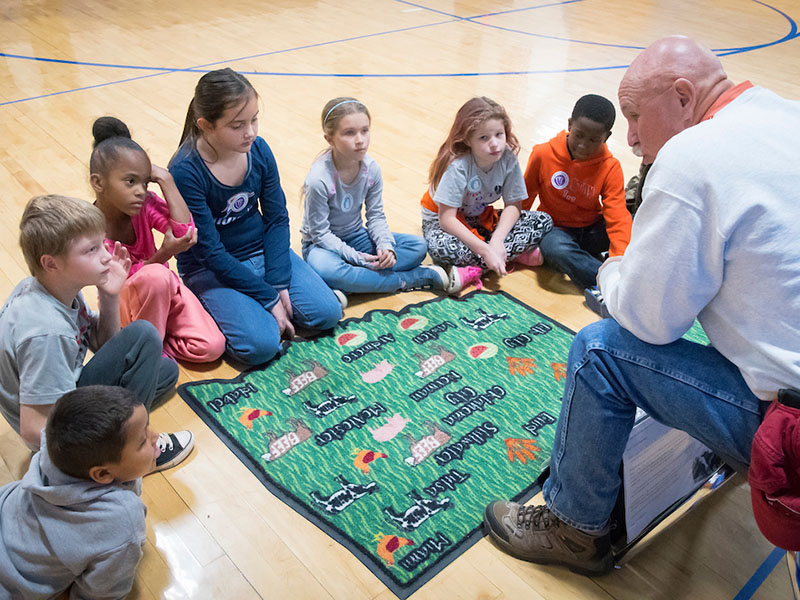
Oklahoma Farmland
Students begin their journey through Farm to You just as their food does, on Oklahoma Farmland. Different types of crops and animals grown and raised in Oklahoma are discussed as well as Oklahoma’s national ranking for crop production.
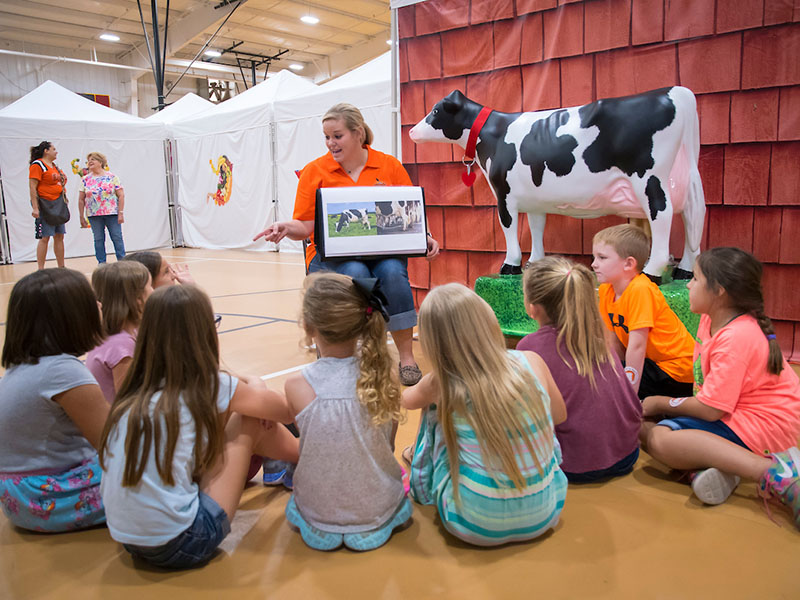
A Farmer's Life
At the second station, students learn about the daily tasks that farmers and ranchers perform to keep their animals healthy and provide safe food for us to eat. They will also get the opportunity to milk Belle, our life-like dairy cow!
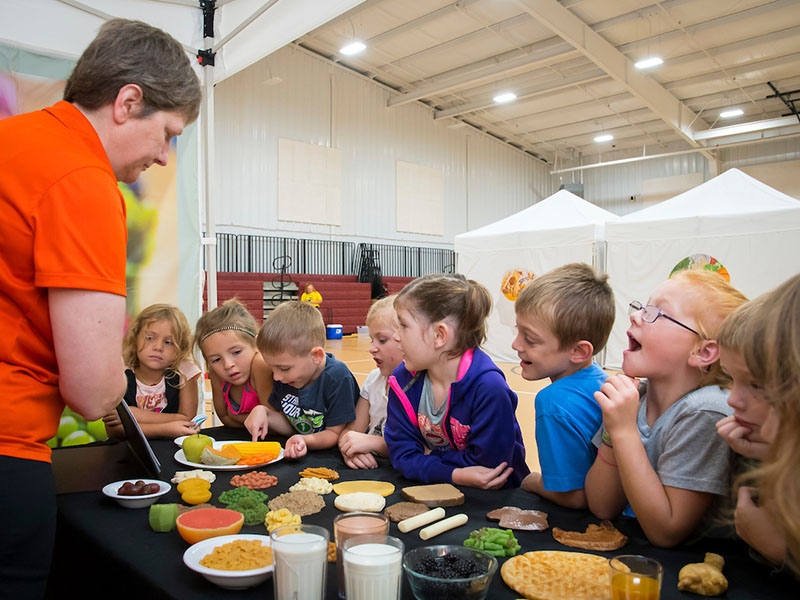
The Farmer's Market
The Farmers’ Market forms the connection of agriculture and health by teaching students how food gets from the farmer to the consumer. They will learn the steps taken to get food to Oklahoma that is grown in other regions, like oranges. Students will use food models to build a healthy meal that follows MyPlate guidelines.

The Mouth
Students learn that the mouth is the first stop in the digestion process. At this station, students are taught ways to keep the mouth and teeth healthy such as twice daily brushing and flossing and consuming calcium-rich foods.
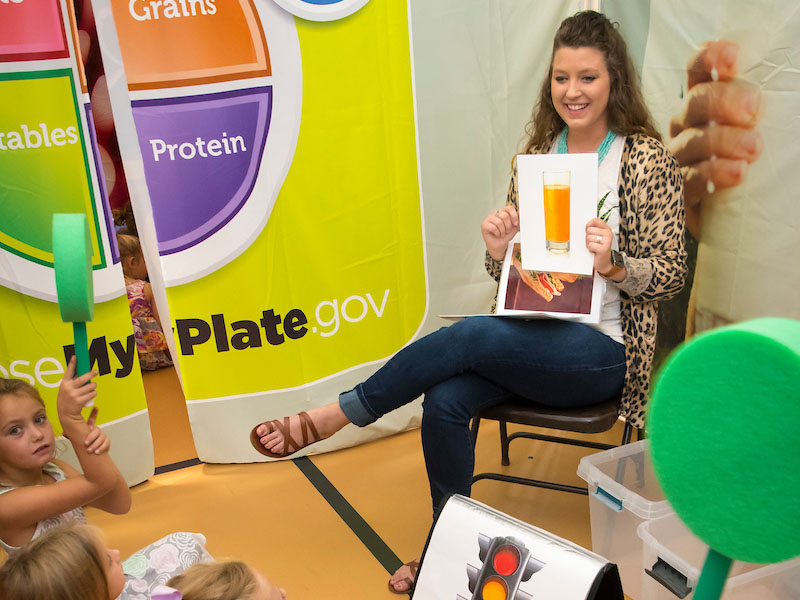
The Stomach
In the station, students will learn the basic role the stomach plays in digestion and will play a game to determine if the foods they are eating are “GO,” “SLOW” or “WHOA” foods. The type of food determines if it is a “GO” food: something should be eaten regularly, a “SLOW” food: something that should be eaten occasionally or a “WHOA” food: something that should be saved for special occasions.
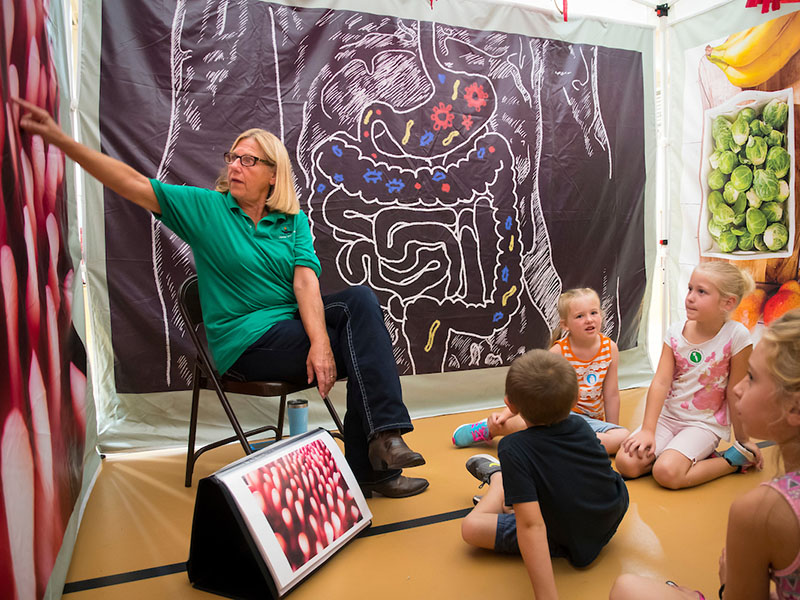
The Intestines
This station explains the role the intestines have in the digestive system, including absorbing nutrients and removing waste. Students will learn about foods that are high in fiber to promote good intestinal health.

The Muscles
At the muscle station, students will learn the importance of eating healthy and exercising for our muscular health. They will perform exercises and identify what major muscles are used in each exercise.
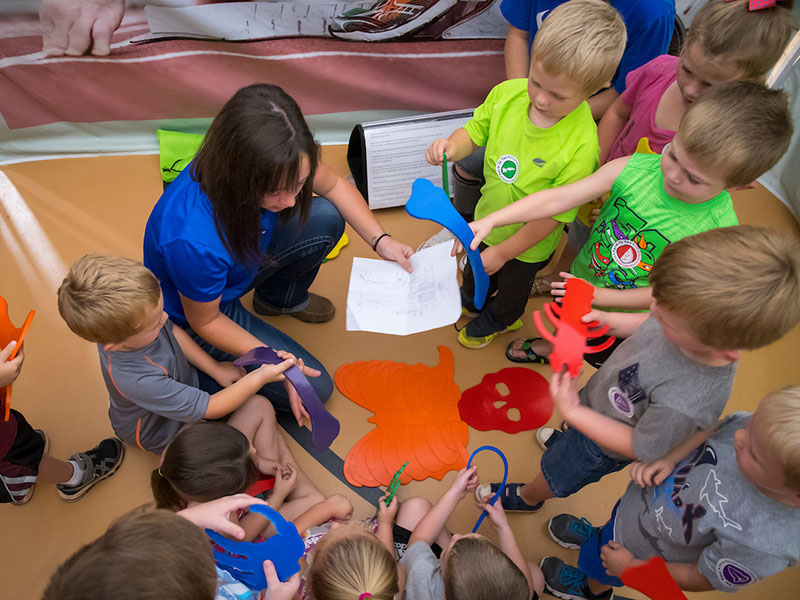
The Bones
At this station, students will discuss the importance of consuming calcium-rich foods for their bone health. They will also learn where the major bones of the body are located.
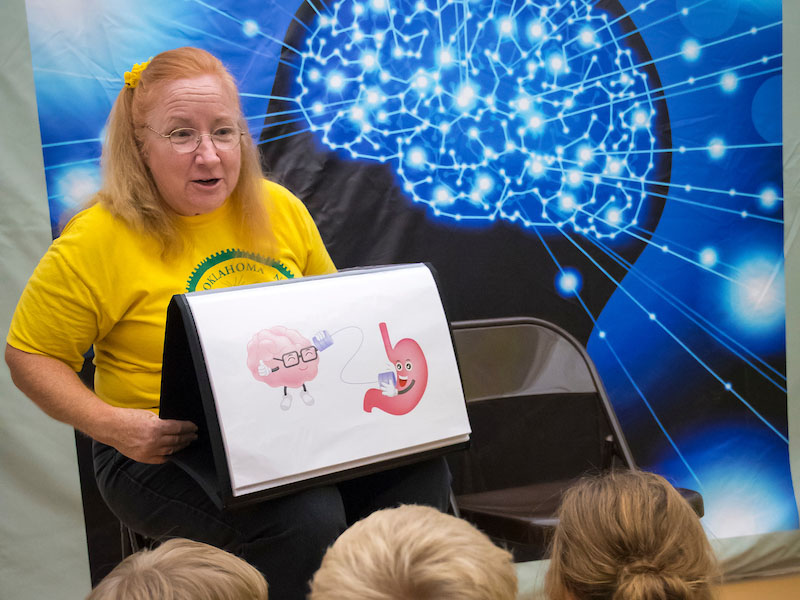
The Brain
Students will learn about how the brain uses the one quarter of the foods we eat to have energy to communicate messages to the body. Students will also discuss other ways to ensure they have a healthy brain, such as getting enough sleep every night and eating breakfast.
